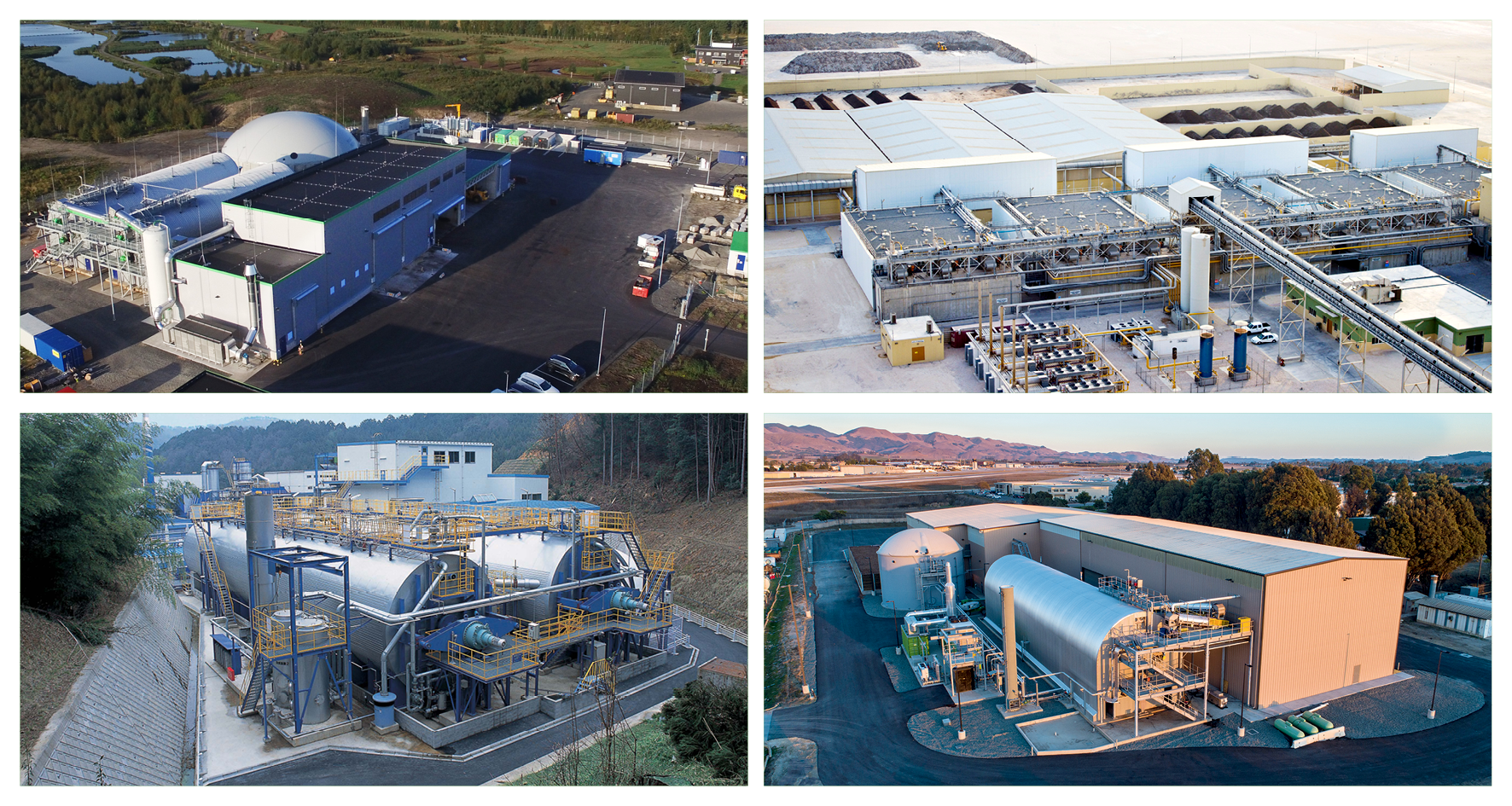
A Journey Through Time and Space: 100th Kompogas® Plant to be Built in Italy
Kanadevia Inova, Zurich, is joining forces with Cesaro Mac Import to build another Kompogas® biogas generation plant in Italy: the 100th installation based on the tried-and-tested dry anaerobic digestion technology. This anniversary project, which the project partners will deliver in Reggio Emilia for the Iren Group by December 2022, is a further milestone in the evolution of the technology. Here’s a brief account of the success story.

Zurich / Reggio Emilia. The 100th Kompogas® reference could be booked by closing the contract for the project in Reggio Emilia (Italy). The plant, built around 140 kilometres south of Milan under the lead of Cesaro Mac Import (CMI), a key player in the Italian waste management business and a longstanding market partner of Kanadevia Inova in Italy, is the 100th installation featuring Kompogas® technology. With know-how gathered in the course of six joint projects and complementary capabilities, the cooperation partners made a persuasive bid for the contract tendered by the client, Iren SpA. CMI director Luigi Cesaro and Stefano Boscolo, Director Sales Renewable Gas at Kanadevia Inova, are of one voice: “The last few years have shown that by combining our offerings we’re able to offer pinpoint solutions for Italy’s waste and energy management needs. This makes it even more gratifying that the 100th Kompogas® plant isn’t just being built in Italy, but with our trusted partnership.”
The installation is one of the most technologically advanced projects delivered by Kanadevia Inova in Italy on the basis of its dry anaerobic digestion process. Four PF2100 digesters will ultimately process 100,000 t/a of the organic fraction of local municipal solid waste (OFMSW) and green waste to produce around 16.7 million Nm³/a of biogas. This is the first time Kanadevia Inova is building this size of digester in ferro concrete, scaling up the design to optimally meet the client’s requirements, local conditions, Italy’s current regulations and the special geographic features of the site. Engineering had already begun by the end of last year. The plant is scheduled to go into operation in December 2022.
The biogas produced by digesting biogenic waste in the Kompogas® plant is then processed into biomethane. Energy transition, decarbonisation and climate protection: Kanadevia Inova has an important part to play in addressing all these issues, with technologies ranging from gas upgrading, electrolysis and methanation systems to complete power-to-gas solutions, as well as biogas generation with the Kompogas® dry anaerobic digestion technology.
An Idea to Stop the Waste of Organic Waste
The Kompogas® process originated in Rümlang near Zurich, which is where the first installation went into operation in 1992. The story of the technology all began with a vision: construction entrepreneur and energy pioneer Walter Schmid had the idea of using organic and green waste to produce energy to fuel his fleet of lorries. A pilot plant with a digester volume of around 20 m³ and an annual capacity of 360 tonnes was followed by the first commercial Kompogas facility, already able to convert 3,000 tonnes of green waste a year into biogas to be used as fuel for the company’s fleet.
Over the years the plants have got bigger and bigger. By far the largest Kompogas® installation went into operation in 2009 in Doha, the capital of the Arab emirate of Qatar. Its 15 digesters process 274,000 tonnes of household organic and green waste a year to produce 25.3 million Nm³ of biogas. The project was part of the Qatar government’s new waste management approach. In the winter months the thermal energy produced in the process of generating electricity from the biogas is used to heat the digesters. Instead of electricity and heat – the main products in many other countries – the most interesting output of this plant is the compost produced from the digestate. It’s used by the emirate to cultivate parks, areas of green and golf courses. The Kompogas® technology per se stands out in terms of above-average availability and robust process biology. Under extreme conditions, such as those that prevail in Qatar, it’s the system’s process stability that comes particularly into play.
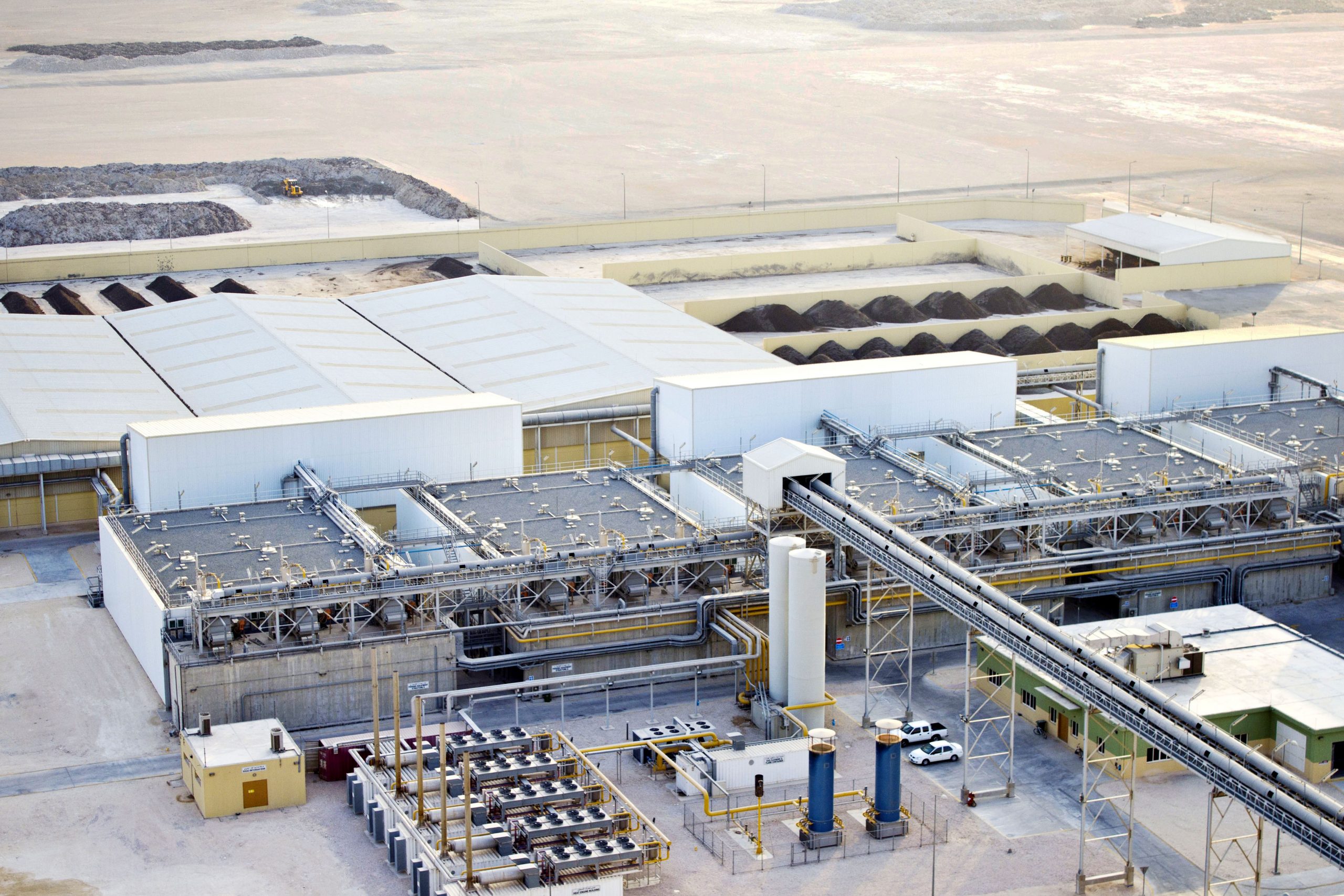
274,000 t organic waste, 15 digesters, 25.3 million Nm³/a biogas – Doha marks the largest Kompogas plant to date.
At the opposite end of the scale, the smallest installation, built for Kanadevia Inova’s parent company in Kyoto, treats 1,000 tonnes of organic and food waste a year to generate power and heat. This was followed by seven more projects in Japan, a country where renewable energy technologies are also rapidly gaining importance. References in the Far East also include three projects in China, one of the growth markets for Kompogas® technology.
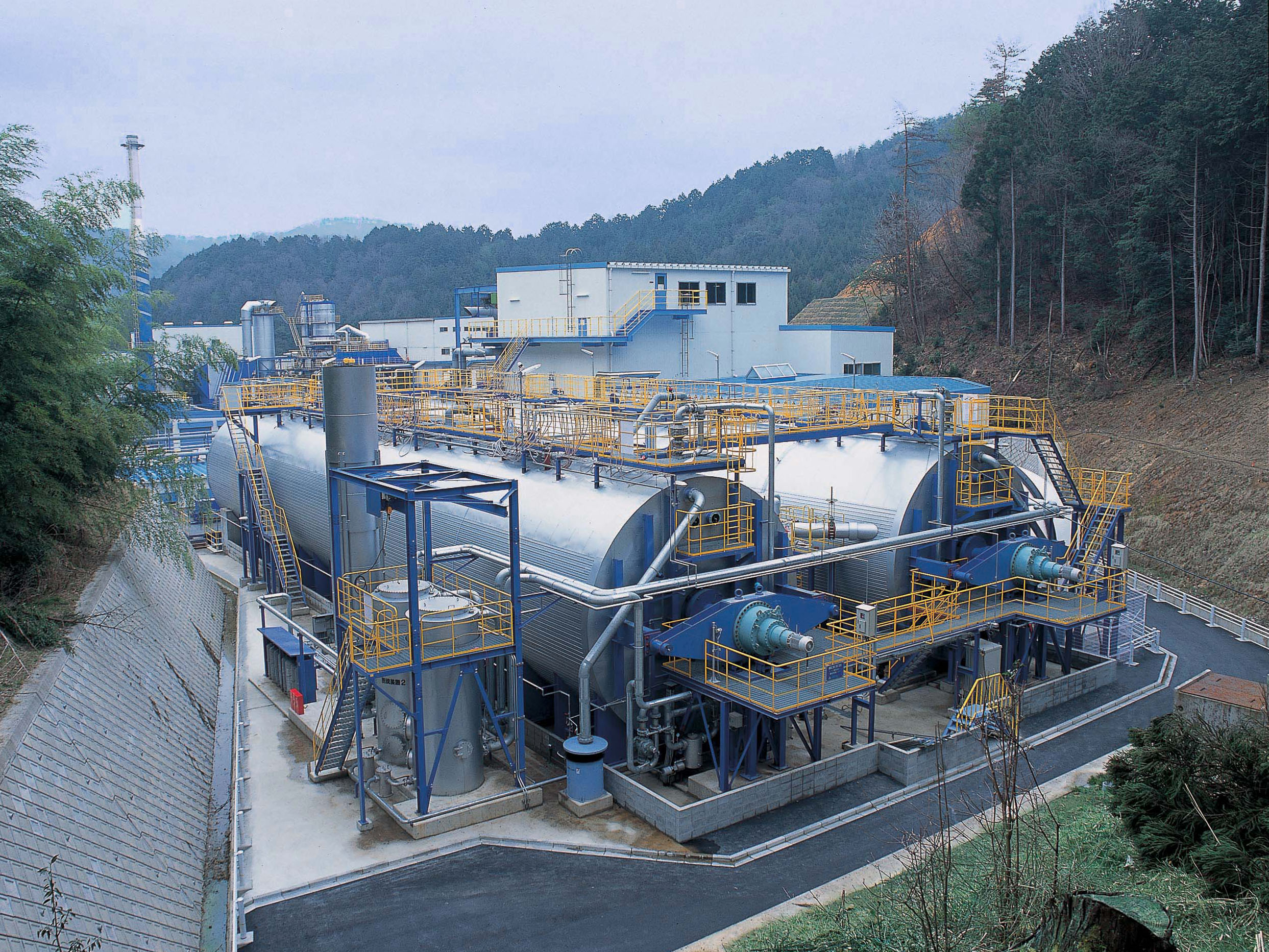
The pilot plant in Kyoto, now decommissioned, was the smallest project to date. Seven more projects followed in Japan.
Global Success Story
Far though Japan is from Switzerland, the farthest-flung location isn’t in the east. To date this record is held by the Kompogas® plant that will shortly commence operation in the Californian City of Escondido, 9,586 kilometres to the west. In cooperation with its US subsidiary in Knoxville, Tennessee, Kanadevia Inova has constructed a dry anaerobic digestion plant with a downstream biomethane system, also a technology from the Kanadevia Inova fold. The San Diego plant processes green and food waste from Southern California to produce biogas which is then upgraded into biomethane in a gas upgrading unit based on membrane technology. This biomethane, which boasts the same quality as fossil natural gas, is injected into the local gas supply grid and used to generate renewable electricity and heat.
It’s already the second project in sun-drenched California. Since 2018 a Kompogas® plant in San Luis Obispo, slightly further to the north, has been producing biogas from source-separated organic waste, green and food waste. Notably this is Kanadevia Inova’s first DBOO (design, build, own and operate) plant. In other words, Kanadevia Inova not only delivered the turnkey plant, but also financed it and owns and operates it itself via its US subsidiary.
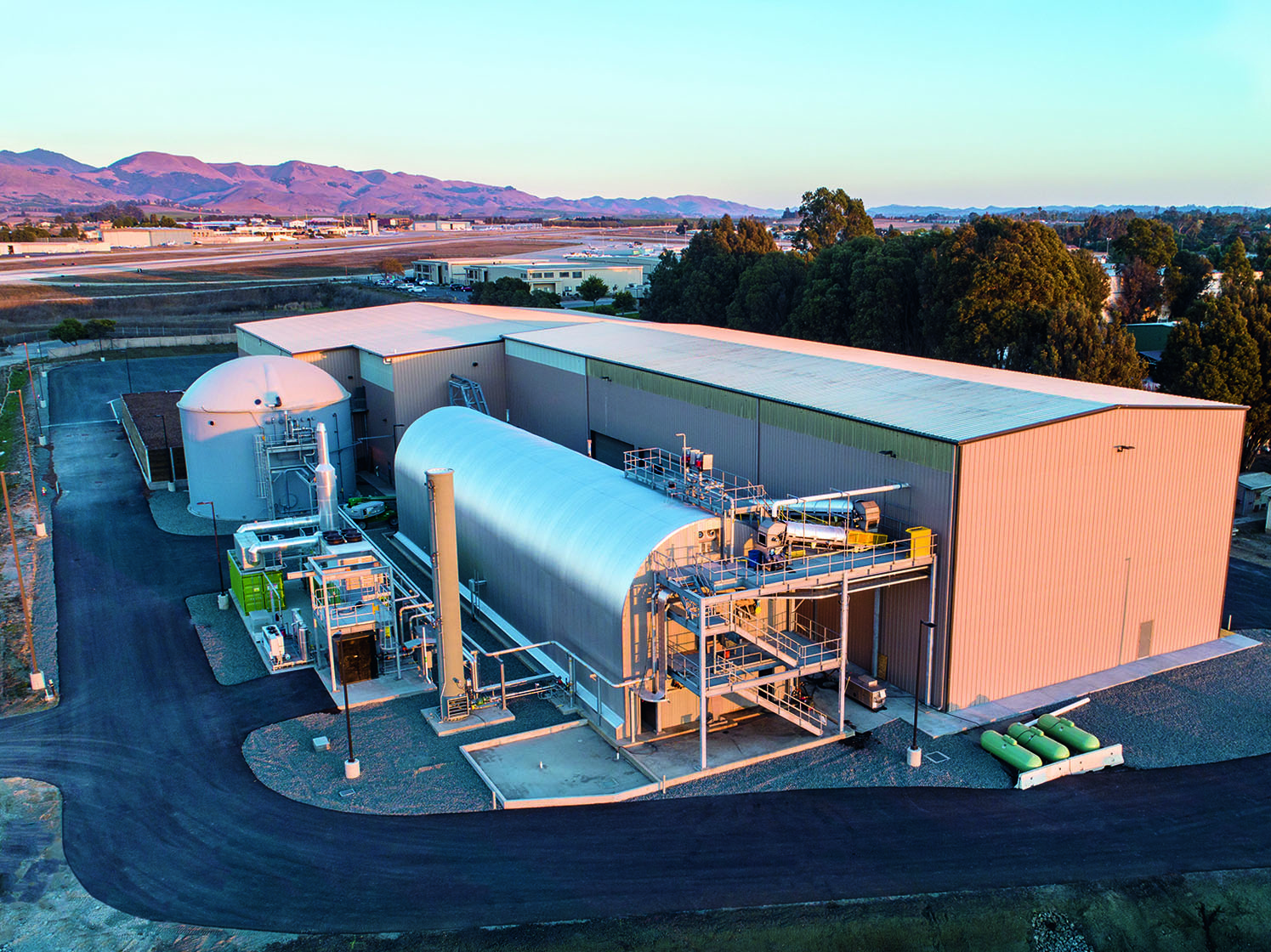
Biogas plants like the project in San Luis Obispo can make an important contribution to the climate protection turnaround in the USA.
Kanadevia Inova’s first DBOO project in Europe, in Jönköping, Sweden, went into operation a few weeks ago. It also features a biomethane system. The difference is that here, instead of being fed into the grid, the biogas-based natural gas is compressed in a downstream compression unit and injected into containers as bioCNG. This is transported to biofuel filling stations in various parts of the city. With local buses, waste collection trucks and natural gas-fuelled cars fuelled by a gas produced by treating biowaste, the plant is a lighthouse project in the implementation of Sweden’s decarbonisation strategy. The digestate from the fermentation process – high-grade compost and liquid fertiliser – is used by local farms and gardening businesses.
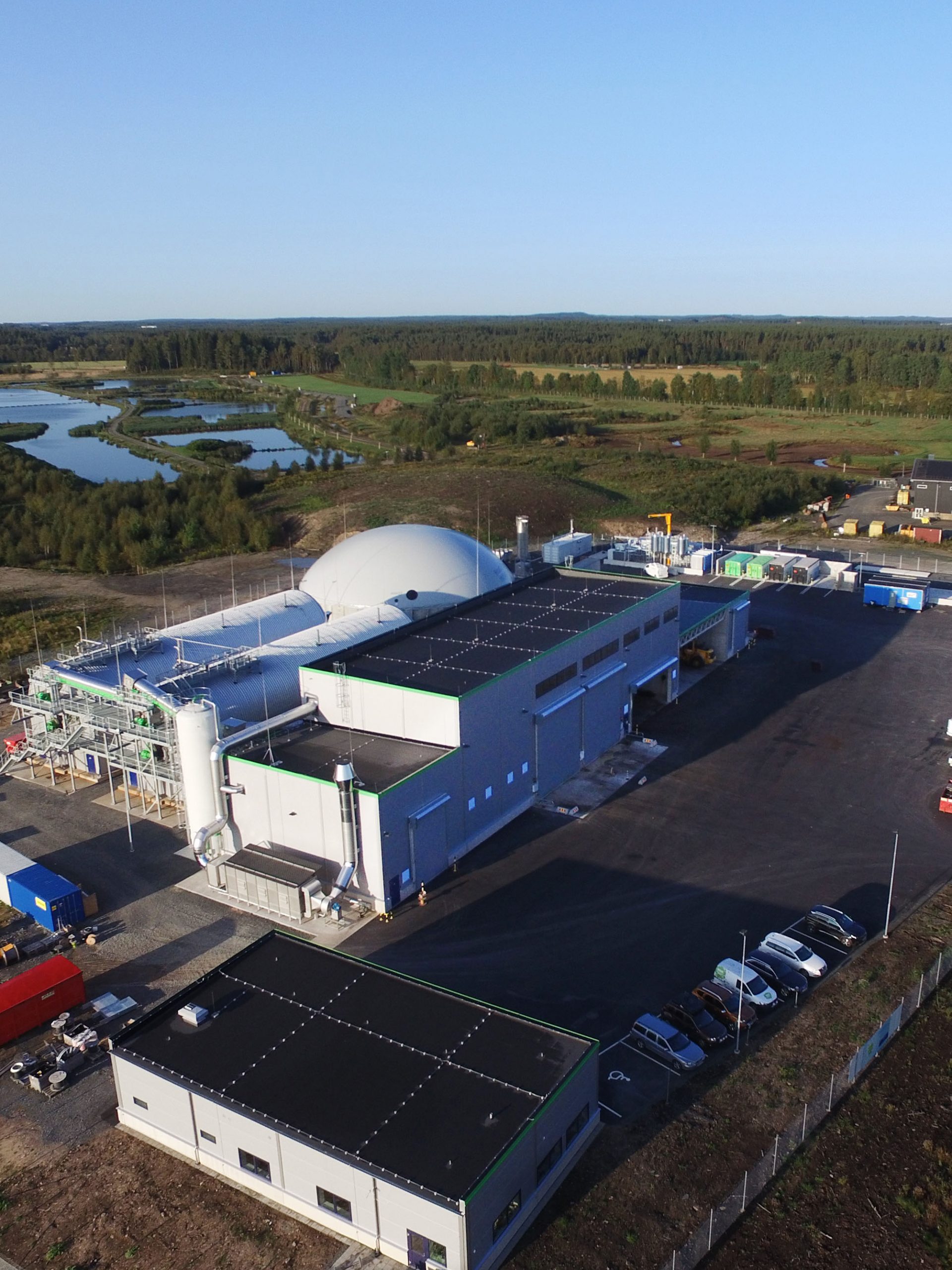
First plant to produce bio-CNG: The Jönköping project in Sweden supplies biofuel from non-fossil sources.
Higher Quality of Life around the Globe
What started with an experiment on a balcony and a small pilot installation near Zurich now helps protect and preserve the environment for generations to come, all over the world. Not only this, but plant construction and maintenance also create new jobs: the renewable energy industry now employs well over 11 million people worldwide (source: Renewable Energy and Jobs: Annual Review 2020). Contracts awarded locally also create employment, benefiting the local economy and value chains.
Background Information: History
Kompogas®: The Story of a Sustainable Invention
In 1992, the year the first Kompogas® plant went into operation in Rümlang in the Swiss canton of Zurich, Walter Schmid established Kompogas AG. Eighteen years later he sold the company to the Swiss energy utility Axpo to be able to devote himself to new, promising energy technologies. The Axpo Holding AG subsidiary still operates 15 Kompogas® plants of its own in Switzerland. In 2014, the Kompogas plant construction business, including its entire engineering capabilities, were sold to Kanadevia Inova AG (HZI), the Zurich-based global leader in Waste to Energy (WtE). This extended Kanadevia Inova’s portfolio of waste management technologies to include Kompogas®, a process for generating energy from biogenic waste currently used in 16 countries. No other approach is as robust when it comes to meeting the technical challenges of long-term operation in such a wide range of conditions, from desert regions to colder northern European climes.
Kanadevia Inova has rounded off its renewable gas portfolio with further acquisitions in gas upgrading (2015) and power to gas (2016). It can now offer technologies for producing biogas, biomethane, hydrogen and synthetic natural gas (SNG), plus plant technology for using CO2. All these technologies are operated under the Renewable Gas business unit.
Download: Media release
Download: Reference list
Download images:
Collage – Jönköping (SWE), Doha, Kyoto (JPN), San Luis Obispo (USA)
Doha – 274,000 t organic waste, 15 digesters, 25.3 million Nm³/a biogas – Doha marks the largest Kompogas plant to date.
Kyoto – The pilot plant in Kyoto, now decommissioned, was the smallest project to date. Seven more projects followed in Japan.
Jönköping – First plant to produce bio-CNG: The Jönköping project in Sweden supplies biofuel from non-fossil sources.
Jönköping CNG container – The transport of the containers filled with bio-CNG illustrates the benefits for the region: decarbonizing freight traffic, but also public transport.
San Luis Obispo – Biogas plants like the project in San Luis Obispo can make an important contribution to the climate protection turnaround in the USA.